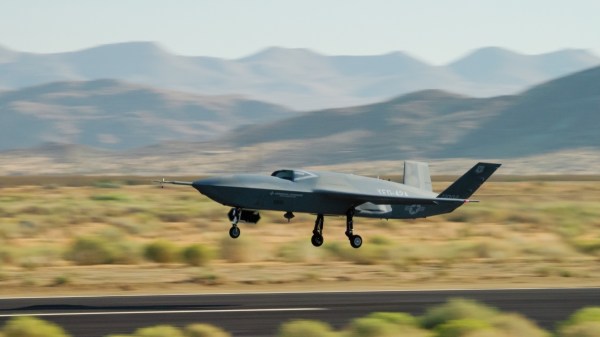Anduril conducts first flight test of Air Force CCA drone prototype

Anduril’s prototype drone developed for the Air Force’s Collaborative Combat Aircraft (CCA) program has taken its first live flight, the service announced Friday.
The company conducted the flight of the unmanned fighter jet — known as the YFQ-44A — on Friday at a test location in California, the Air Force said in a press release. Beginning live flight tests of the CCA prototype “expands the program’s knowledge base on flight performance, autonomous behaviors and mission systems integration,” the service noted.
The announcement that Anduril has moved into the flight test stage comes after General Atomics conducted the first flight of its CCA offering in August. Both companies are vying for Increment 1 of the CCA program, which is part of the Air Force’s Next Generation Air Dominance (NGAD) family of systems.
General Atomics and Anduril received contracts for the first CCA increment in 2024, while the Air Force is also working with Shield AI and RTX to provide the drone’s mission autonomy.
With both airframe vendors now in the next stage of the program, the Air Force is one step closer to making a final production decision for Increment 1 — expected in 2026.
“This milestone demonstrates how competition drives innovation and accelerates delivery,” Secretary of the Air Force Troy Meink said in a statement. “These flights are giving us the hard data we need to shape requirements, reduce risk, and ensure the CCA program delivers combat capability on a pace and scale that keeps us ahead of the threat.”
The robotic wingman drones are expected to fly alongside the service’s manned sixth- and fifth-generation aircraft to conduct a range of operations — including offensive strike and intelligence, surveillance and reconnaissance. The Air Force has previously said it wants to buy up to 1,000 Increment 1 CCA drones and begin fielding sometime before 2030.
During a briefing with reporters in September at AFA’s Air, Space and Cyber conference, Diem Salmon, Anduril’s vice president for air dominance and strike, said that the company’s goal was to conduct a “semi-autonomous first flight” of the YFQ-44A — meaning that takeoff and landing would be done via the push of a button.
“There is no stick and throttle. It will be able to execute the actual first flight profile pre-planned, using autonomy software on the vehicle,” Salmon said.
Anduril did achieve a semi-autonomous flight Friday, and all of the remaining tests will be done the same way, Jason Levin, the company’s senior vice president of engineering, said in a statement.
“By integrating autonomy into the earliest ground and flight tests for YFQ-44A, we’re tackling the hardest challenge that this technology presents first,” Levin said. “As a result, we are accelerating the pace of learning and iteration so that we can ultimately deliver this decisive capability to warfighters faster.”
The Air Force is taking a rapid and flexible approach with the CCA program and plans to field the aircraft in increments, with each batch offering slightly different capabilities. At least one of the prototypes for Increment 1 will head into production, but the service intends to allow other firms besides General Atomics and Anduril to also compete for the contract.
According to the service, developmental flight activities will continue at both vendor and government test locations — including Edwards Air Force Base in California “where envelope expansion and integration work will inform future experimentation.”






